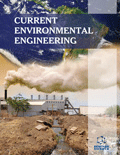Abstract
Objective: Water quality monitoring has been high priority to determine the current conditions of the water system. The present study evaluates the surface water quality in terms of the physicochemical parameters of the Brari-Nambal lagoon of Dal Lake, Kashmir.
Method: Various physico-chemical parameters of water samples for the Brari-Nambal lagoon of the Dal Lake were determined post September 2014 floods in Kashmir. The values of physico-chemical parameters in the lake water samples were compared with those of World Health Organization (WHO) guideline. For the evaluation of the huge obtained data set, various robust statistical techniques like statistical interpretation for finding p value and Standard Ion Index (SII) which gives the interpretation of the cation and anion concentration by involving the standardization in statistics. Data treatment by mathematical methods was also done to get the results in a better and structured way. Result: Water Quality Index (WQI) was very poor and water quality falls under grade ‘D’ with values >75. Permeability Index (PI) value was 27.94 before floods and hence fit for irrigation and 24.98 after floods thereby unfit for irrigation. Kelly’s ratio remains <1 throughout and hence fit for irrigation. Sodium Adsorption Ratio (SAR) remains <10 and therefore fit for irrigation. Magnesium Hazard (MH) values were calculated and remained < 50 and hence an indication for fit water for irrigation purposes.Keywords: Water quality, metal ions, Brari-Nambal lagoon, carbonates, salts, statistical techniques.
Graphical Abstract
 17
17 2
2

